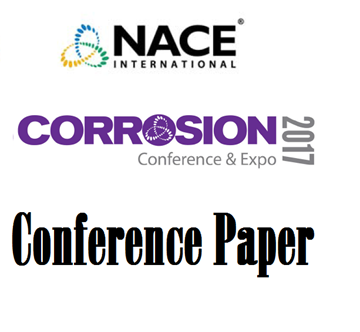Search
Products tagged with 'corrosion'
View as
Sort by
Display
per page
51317--9483-DNA Based Diversity Analysis of Microorganisms in Industrial Cooling Towers
Product Number:
51317--9483-SG
ISBN:
9483 2017 CP
Publication Date:
2017
$20.00
51317--9506-Testing and Design of Nonmetallic Composite Repair Systems for Pipeline Intergity
Product Number:
51317--9506-SG
ISBN:
9506 2017 CP
Publication Date:
2017
$20.00
51317--9510-Towards an Effective Corroded Pipelines Integrity Analysis
Product Number:
51317--9510-SG
ISBN:
9510 2017 CP
Publication Date:
2017
$20.00
51317--9513-Monitoring Pitting Corrosion Growth in Steel Rebar Using Optical Fiber
Product Number:
51317--9513-SG
ISBN:
9513 2017 CP
Publication Date:
2017
$20.00
51317--9514-Work Life Balance – Revisiting the Relationship Between Desalting Efficiency and Overhead Corrosion
Product Number:
51317--9514-SG
ISBN:
9514 2017 CP
Publication Date:
2017
$20.00
51317--9532-Corrosion of Superalloys in 200 Bar 750°C Supercritical Carbon Dioxide
Product Number:
51317--9532-SG
ISBN:
9532 2017 CP
Publication Date:
2017
$20.00
51317-9537- Electrochemical Studies of Titanium-Boron Alloys in Physiological Solutions
Product Number:
51317-9537-SG
ISBN:
9537 2017 CP
Publication Date:
2017
$20.00
51317--9539-Durability of Nano-Coating for Marine Highway Bridge Application
Product Number:
51317--9539-SG
ISBN:
9539 2017 CP
Publication Date:
2017
$20.00
51317-9549- Corrosion Behavior of Niobium-Containing Titanium Alloys in Biological Solutions
Product Number:
51317-9549- SG
Publication Date:
2017
$20.00
51317--9572-Comparison of Corrosion Management Strategies of RC Structures Using a Reliability-Based Approach
Product Number:
51317--9572-SG
ISBN:
9572 2017 CP
Publication Date:
2017
$20.00
51317--9576-Inland Wharves - Challenges of Service Life Modeling
Product Number:
51317--9576-SG
ISBN:
9576 2017 CP
Publication Date:
2017
$20.00
51317-9586- Polymer and Nanomaterial Based Inhibitors: Stimuli-Responsive
Product Number:
51317-9586-SG
ISBN:
9586 2017 CP
Publication Date:
2017
$20.00












